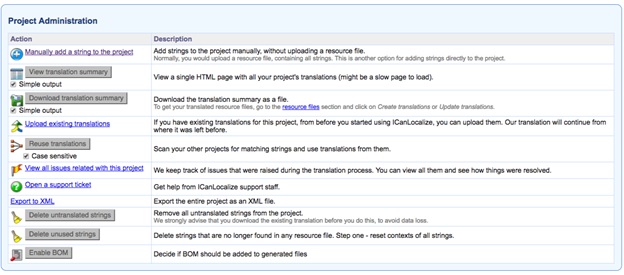The byte order mark (BOM) is a Unicode character, U+FEFF byte order mark (BOM), that appears at the beginning of a text stream (file) and signals the text encoding.
You can find the “Enable/Disable BOM” option at the bottom of each software project in the Project Administration panel.
The use of BOM is optional; if used, it should appear at the start of the text stream.
If BOM is enabled for a software translation project, that means that a BOM is added to all generated files based on the encoding of the file. The table below shows what byte sequence will be added for each file encoding.
Representations of byte order marks by encoding
This table illustrates how BOMs are represented as byte sequences and how they appear in a text editor that is interpreting each byte as representing a legacy encoding:
| Encoding | Representation (hexadecimal) | Representation (decimal) | Bytes as CP1252 characters |
| UTF-8[t 1] | EF BB BF | 239 187 191 |  |
| UTF-16 (BE) | FE FF | 254 255 | þÿ |
| UTF-16 (LE) | FF FE | 255 254 | ÿþ |

